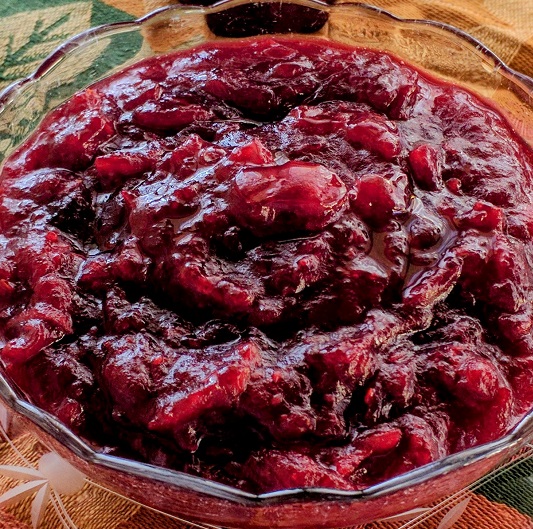Nutrition Label Red Flags: Avoiding Toxic Additives & Chemicals

September 19, 2023
Updated January 2025
When buying food, we often assume that the ingredients are safe, but do we really know what we are eating?
“Understanding the information presented on nutrition labels is crucial. These labels provide valuable insights into the nutritional content and ingredients present in packaged foods,” says Robert Hildebrandt, RDN, CDCES, dietitian at Southern Ocean Medical Center. “However, not all ingredients are created equal, and some should be approached with caution or avoided altogether.”
Many toxic chemicals and substances are used in processed foods to help preserve them, or as another part of the process in creating the product we see on the shelves in stores.
Which additives and chemicals are dangerous?
Keep an eye out for: red dye No. 3, titanium dioxide, brominated vegetable oil, propylparaben and potassium bromate.
These chemicals are commonly found in many American candy products, but are banned in the European Union (EU). Many brands that use these chemicals in the United States already alter their recipes to be sold in the EU.
What are the potential risks of these ingredients, and what are they used for?
Red Dye No. 3
Red Dye No. 3: also known as erythrosine, is a synthetic dye derived from petroleum
The Food & Drug Administration (FDA) has recently banned the use of red dye no. 3 in food and ingested drugs like dietary supplements. Food manufacturers will still have until January 2027 to reformulate their products, so be wary of this on nutrition labels.
During lab research studies on animals, red dye no. 3 was found to be a potential cause for cancer.
- Animals that were fed high doses of the dye over long periods of time developed tumors in their thyroids
- Other studies have linked artificial food dyes, such as red dye no. 3, to hyperactivity and neurobehavioral changes and effects in children
Common uses: to enhance the appearance of red candies, as well as in food and beverages, creating a brighter “cherry red” color
Titanium dioxide
Titanium dioxide: is a powder currently on New Jersey’s Right to Know Hazardous Substance List due to citations of it by The Occupational Safety and Health Administration (OSHA), American Conference of Governmental Industrial Hygienists (ACGIH), National Institute for Occupational Safety and Health (NIOSH) and International Agency for Research on Cancer (IARC)
Animal studies have shown that high doses of titanium dioxide can increase inflammation and the formation of colon tumors.
- It has also been shown to worsen the progression of inflammatory bowel disease and weaken the lining in your gut
Common uses: creates the pigment known as “titanium white,” which is the brightest and most white of all pigments
- Helps to make foods more vibrant and bright
- Can help define colors more clearly and gives a more “natural” whiteness to foods
- Helps to prevent UV degradation
Brominated vegetable oil (BVO)
Brominated vegetable oil (BVO): is a vegetable oil that has bromine added to it
Research on BVO’s health effects are limited, but the main concerns are that the substance can accumulate in the body’s fatty tissue and cause harm to your nervous system.
Drinking beverages that contain BVO in large quantities has been linked to adverse health effects including headaches, irritated skin or mucous membranes, memory loss, loss of coordination and fatigue.
Common uses: is most commonly found in soft drinks or beverages with citrus flavoring
- BVO adds weight to the mixture of flavor, which allows the flavors to combine with the sweetened water and prevent separation
Propylparaben
Propylparaben:is a type of paraben used in a wide variety of products such as skincare, haircare and some processed foods
- Causes disruptions in hormone signaling
- Could potentially be linked to diminished fertility due to its negative effects on the endocrine system
Common uses: is an antimicrobial agent, flavoring agent and preservative in foods
Potassium Bromate
Potassium bromate: is an oxidizing agent used as a food additive, typically when making bread
- Found to be carcinogenic in animal studies, meaning that it has the potential to cause cancer
Common uses: works as a powerful oxidizing agent to help age flour faster than open air through a chemical process
- Helps in the binding process of gluten molecules, which is necessary to give bread its texture, shape and beige coloring
- It can bleach dough for bread-making and increase its elasticity
- To avoid this ingredient, watch out for “brominated flour” on ingredients lists, as well as its official name, potassium bromate
How can I avoid these toxic chemicals in my diet?
When in the grocery store, pay close attention to the ingredients list on your product’s label to know what you are consuming. Some ingredients that are approved by the FDA are not necessarily good for your health, and could have potentially harmful effects.
If you come across an ingredient you are unsure of, talk to your health care provider about any health safety concerns. It is important to know what you are putting in your body, and how your body will react to it.
Robert, reminds us to “eat processed foods in moderation. To keep toxic chemicals out of your body, focus on building a diet with natural foods such as fruits, vegetables, proteins and grains instead.”
All bodies are different, if you need a more specialized diet or have other underlying health conditions, consider asking your doctor for recommendations and come up with a plan that fits you.
Next Steps & Resources:
- To make an appointment with a physician near you, call 800-822-8905 or visit our website.
The material provided through HealthU is intended to be used as general information only and should not replace the advice of your physician. Always consult your physician for individual care.






